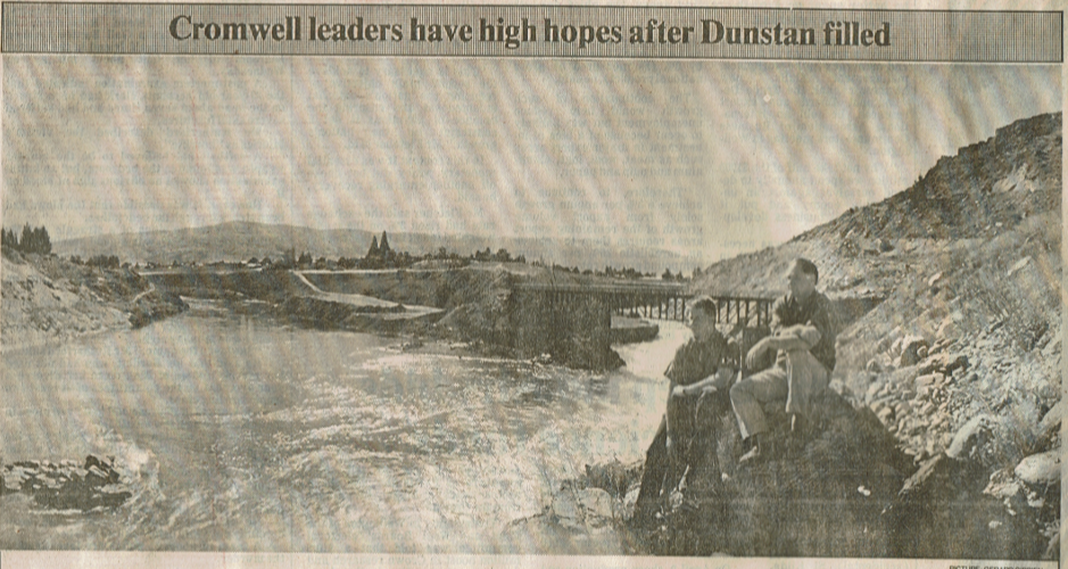Going under for the good of the Nation
by Jill Herron, Cromwell Journalist
This country’s previous leaders didn’t bother much with community consultation or environmental impact assessments back in the 1980s. It seemed that if the government had a plan they fired up the bulldozer and people were told to get out of the way.
Even complying with what was much less-onerous legal consent requirements weren’t really on the radar for Sir Rob Muldoon’s bolshie National Party when it came to building the Clyde Dam.
The project was the flagship undertaking of the ambitious and controversial ‘Think Big’ projects. It and a few others have proved successes energy-wise but as a whole ‘Think Big’ was much aligned as creating unmanageable debt, destroying landscapes and over-investing public money.
CLYDE DAM PROJECT FACT FILE
From 1968 onward the series of announcements that led to the eventual creation of Lake Dunstan, left residents of Cromwell and surrounding rural areas awash with shock and heartbreak. Over 2000ha including farmland, 17 orchards, homes and even the main streets were set to go under.
Landowners rallied and successfully took the government to task for not acquiring the proper water consents but Muldoon’s men soon enacted legislative manoeuvres to smooth the way forward.
As serious construction work got underway, most opposed and saddened by the project gradually accepted they had no choice but to face the inevitable. Others buoyed by the prospect of gaining a scenic recreational asset and tourism magnet in the form of Lake Dunstan began planning for an exciting new future.
Even complying with what was much less-onerous legal consent requirements weren’t really on the radar for Sir Rob Muldoon’s bolshie National Party when it came to building the Clyde Dam.
The project was the flagship undertaking of the ambitious and controversial ‘Think Big’ projects. It and a few others have proved successes energy-wise but as a whole ‘Think Big’ was much aligned as creating unmanageable debt, destroying landscapes and over-investing public money.
CLYDE DAM PROJECT FACT FILE
- Dam height 100m, width at base 70m
- New Zealand’s biggest, costliest Hydro-Dam
- Contains one million cubic metres of concrete
- Lake Dunstan is 26.4 square km in area
- Lake Dunstan is 40km long
- There are 18km of drainage tunnels in the Cromwell Gorge
From 1968 onward the series of announcements that led to the eventual creation of Lake Dunstan, left residents of Cromwell and surrounding rural areas awash with shock and heartbreak. Over 2000ha including farmland, 17 orchards, homes and even the main streets were set to go under.
Landowners rallied and successfully took the government to task for not acquiring the proper water consents but Muldoon’s men soon enacted legislative manoeuvres to smooth the way forward.
As serious construction work got underway, most opposed and saddened by the project gradually accepted they had no choice but to face the inevitable. Others buoyed by the prospect of gaining a scenic recreational asset and tourism magnet in the form of Lake Dunstan began planning for an exciting new future.


